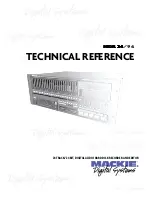
Configuring the UDS Using Telnet or the Serial Port
UDS200 User Guide
32
Pack Control
Two firmware-selectable packing algorithms define how and when the unit sends
packets to the network. The standard algorithm is optimized for applications in which
the unit is used in a local environment, allowing for very small delays for single
characters while keeping the packet count low. The alternate packing algorithm
minimizes the packet count on the network and is especially useful in applications in
a routed Wide Area Network (WAN). Adjusting settings in this mode can economize
the network data stream.
Pack control settings are enabled in Flush Mode. Set Pack Control to
00
if specific
functions are not needed.
Note
:
To look up hex values, see
B: Binary to Hexadecimal
.
Table 5-10. Pack Control Options
Option
Bit 7 6 5 4 3 2 1 0
Idle Time
Force transmit: 12ms
0 0
Force transmit: 52ms
0 1
Force transmit: 250ms
1 0
Force transmit: 5sec
1 1
Trailing Characters
None
0 0
One
0 1
Two
1 0
Send Characters
2-Byte Send Character Sequence
1
Send
Immediately
After
Send
chars
1
Idle Time:
Idle time to "Force transmit" defines how long the unit waits before
sending accumulated characters. This wait period is between characters. If there is
an idle period between characters equal to the Force transmit set, the UDS packages
the serial data currently in the buffer and sends it to the network.
Trailing Characters:
In some applications, CRC, Checksum, or other trailing
characters follow the end-of-sequence character. This option helps to adapt frame
transmission to the frame boundary.
Send Characters
:
If
2-Byte Send Character Sequence
is enabled, the unit interprets the
sendchars as a 2-byte sequence. If this option is not enabled, the unit
interprets them independently.
If
Send Immediately After Send Characters
is not set, any characters
already in the serial buffer are included in the transmission after the unit finds
a "transmit" condition. With this option, the unit sends immediately after
recognizing the transmit condition (sendchar or timeout).
Note:
A transmission might occur if status information needs to be
exchanged or an acknowledgment needs to be sent.
















































